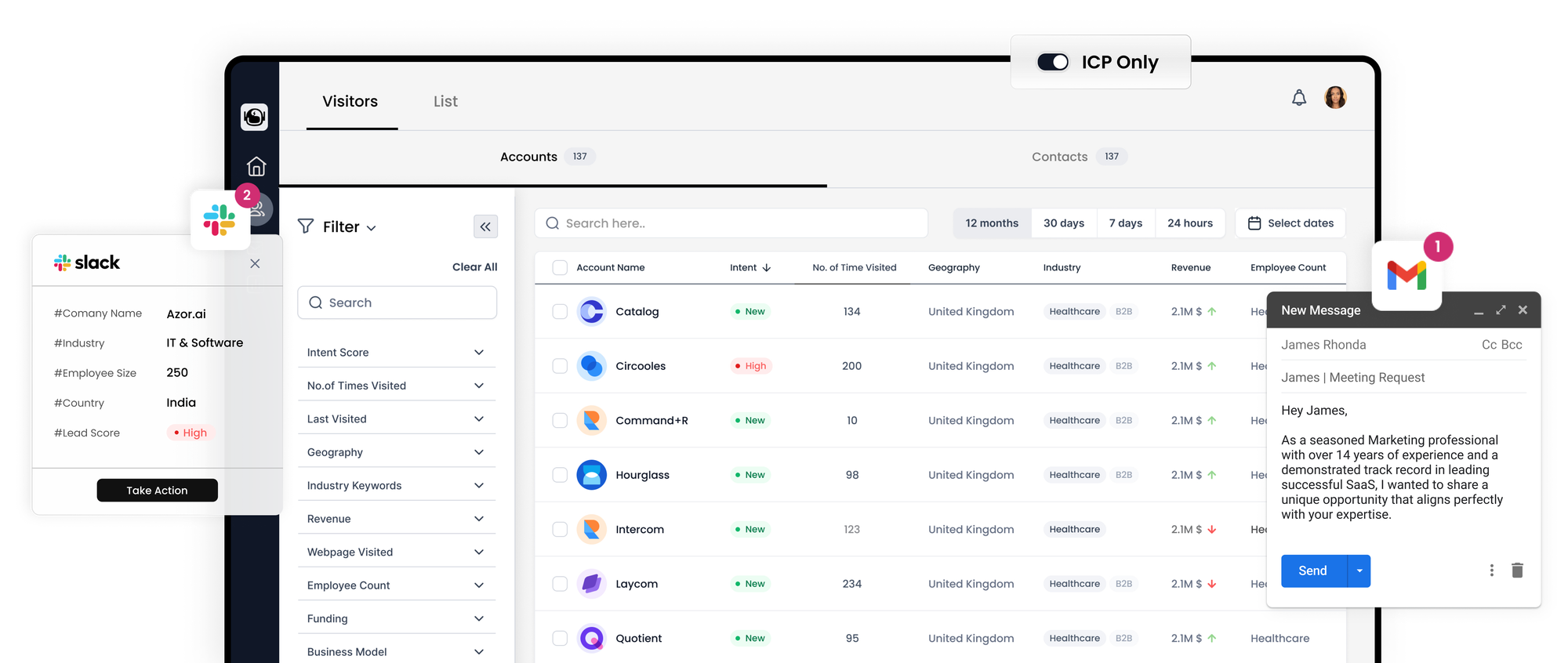Building a Demand Generation Strategy for B2B Growth

Understanding Demand Generation in B2B Contexts:
Demand generation stands at the forefront of a robust B2B marketing strategy, essential for not just capturing attention but for shaping a brand's reputation and authority. It's the strategic process of creating a reliable presence and engaging content that stirs interest and nurtures high-quality leads into the sales funnel.

Demand generation versus lead generation:
While often conflated, demand generation and lead generation serve distinct roles in the marketing ecosystem. Demand generation focuses on cultivating brand presence and credibility, which naturally steers potential customers onto the path of engagement. In contrast, lead generation is about converting that engaged audience into actionable leads through direct marketing efforts.
Here are five pivotal steps to develop a potent B2B demand generation strategy:
Step 1: Elevate Brand Awareness
In the competitive realm of B2B marketing, brand awareness is more than making noise—it's about leaving a lasting, positive imprint on potential clients. Authentic customer reviews are a goldmine for enhancing visibility and trust. They provide concise peer insights that can guide buyers through the clutter of options, acting as a lighthouse in a sea of information.
To amplify brand recognition:
- Embrace the power of genuine, timely customer feedback to help refine your offerings and messaging.
- Utilize data-driven insights to create a brand presence that resonates and sticks with your target audience.
Step 2: Strategize Content Creation
A reputation as an industry thought leader can be your greatest asset, establishing a foundation of trust from the first point of contact. A strategic content marketing plan that delivers valuable insights at every stage of the buyer's journey can position your brand as the go-to source for solutions.
To craft a compelling content strategy:
- Tailor content to guide buyers through their journey, addressing concerns and providing solutions.
- Consider creating personalized content for high-value leads that frequently convert or represent significant revenue potential.
Step 3: Lead Nurturing for Quality Engagement
A successful demand generation strategy doesn't end with initial contact; it requires comprehensive lead nurturing from first touch to final purchase. Marketing should work in concert with sales, fine-tuning communications based on buyer interactions.
To nurture effectively:
- Determine the types of content and optimal channels for sharing that best align with your potential clients' needs.
- Monitor and adjust your lead nurturing efforts based on engagement data to ensure maximum impact.
Step 4: Implement Account-Based Marketing (ABM)
For fast-tracking high-value leads, ABM can be a game-changer. By creating detailed profiles of high-value client types, you can tailor your marketing efforts to engage and support these accounts through their purchasing journey.
To leverage ABM:
- Construct detailed personas of potential high-value accounts to inform personalized marketing initiatives.
- Regularly assess and refine your ABM strategies based on account feedback and performance metrics.
Step 5: Explore Partner Marketing
The digital shift in business interactions has heightened the importance of online marketing. Partnering with third-party platforms allows you to tap into established audiences, saving time and resources while enhancing reach.
To maximize partner marketing:
- Collaborate with partners who have already engaged the audience you aim to target, for more efficient and effective reach.
- Utilize third-party expertise to manage complex PPC campaigns and digital outreach strategies.
Summary:
A comprehensive demand generation strategy is vital for B2B entities aiming for sustainable growth. By focusing on brand awareness, content authority, lead nurturing, ABM, and strategic partnerships, businesses can establish a robust presence in the market, attract quality leads, and foster long-term client relationships.
